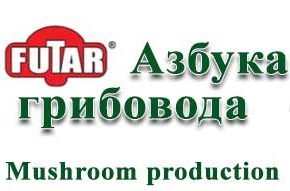How to choose the enterprise format for the production of oyster mushrooms?
Enterprise format
As a rule, the decision to start a mushroom business arises if there is at least one of the following factors:
- availability of a large amount of inexpensive raw material for the substrate. For example, sunflower husks, if you own the oil production; straw and hay – if you work in agriculture; or simply you live in a place where there is a lot of raw materials and it they are rather cheap.
- You have production facilities, which are standing idle, and you’re looking for the way how to use them profitably.
- You have found a stable and guaranteed sales outlet for fresh mushrooms or processed mushroom byproducts.
- there are some extra funds available (your own or from the investment fund) you have decided to invest in the production of oyster mushrooms.
- In order to select the mushroom enterprise format, it is necessary to consider all criteria, as well as to understand how they interrelate.
- Depending on the estimated market capacity, you can choose the amount of mushrooms grown at the enterprise. Then the factors correlation will be following:
|
Number of mushrooms grown per one month |
Areas needed, m2 |
|
|
For growth chambers * |
for substrate production |
|
|
up to 1.5 tons |
120-150 |
40 – 60 |
|
from 2 to 5 tons |
150-220 |
100-150 |
|
from 7 to 10 tons |
400 |
100-150 |
|
From 10 to 25 tons |
1300 |
350 |
|
From 25 to 50 tons |
2500 |
400 |
* taking into account refrigeration and packing facilities, but not taking into account premises for raw materials storage.
When choosing the potential enterprise location, these factors must be taken into account – logistics, remoteness from populated areas and availability of such appropriate capacities:
- electricity – there must be a PTS ( package transformer substation, 63-100 kW for large industries)
- artesian well with the yield not less than 4 m3/h (for small enterprises) to 10 m3/h (for large enterprises)
- utility gas, in the absence of gas, solid-fuel burners can be used to produce heat.
- The construction cost of transformer substantion and the artesian well was not included in the table. The cost of boilers is included in the costs of equipment.
Typical agricultural premises that can be suitable for growing mushrooms:
- refrigerated premises – root cellars and basements;
- fruit and vegetable warehouses and granaries;
- poultry houses, pigsties, calf and cow sheds;
The size of the rooms depends on:
- mushroom blocks layout
- ventilation and humidification system layout
- the amount of cultivated mushrooms.
Before you start the production, you need to draw the plans taking into account microclimate and sanitation requirements, you need to provide a place for packing and storing picked mushrooms, and only then you can start equiping the premises.
If your production is located on a residential yard, you and some of your family members are occupied by mushroom cultivation and you have enough space to place the substrate area – it is more profitable to produce mushroom blocks yourself using substrate heat treatment by hydrothermal technology. It is only necessary to find reliable suppliers of raw materials and a high-quality, sterile mycelium. By scheduling the inoculations, you will be able to regulate the filling of your chambers depending on the season, market needs and other tasks.
If you have:
- not enough space,
- you want to produce 3 to 10 tons of mushrooms per month,
a substrate company located nearby, and you are sure about its product quality, it makes sense to work on commercially made mushroom blocks.
In this case there will be only growth chambers (with a single-zone system) or several incubators and a common growing room (for a bizonal system) on the territory. By this you forget worries about search, acquisition and storage of mycelium and raw materials, recycling of waste water (after hydrothermal treatment), qualified staff for substrate production, and continuous monitoring of substrate manufacturing technology.
However, the more mushrooms you produce using commercially available blocks – the more you become dependent on the schedule of substrate manufacturing enterprise. During market peak activities (before the New Year and Easter) you may not have enough blocks, and if you decide to work in the summer, you will have to adapt to the substrate factory schedule or stop your work for the season. For the stable operation of large-capacity production it is necessary to have your own substrate unit.
